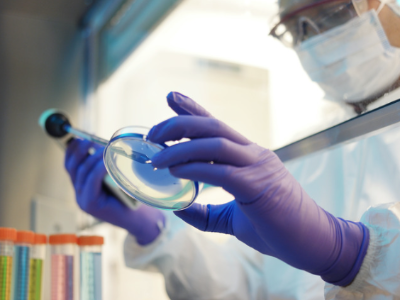
Did you have positive viable sample in your cleanroom? Follow these steps.
In a cleanroom environment, maintaining cleanliness and preventing contamination are critical. If you have a positive viable sample (referring to a sample containing living microorganisms), it's important to follow strict protocols to prevent the spread of contaminants and ensure the safety of the cleanroom and its occupants.
Here's what you should generally do:
1. Isolate the Sample: Immediately isolate the positive viable sample to prevent accidental spread of the microorganisms. Place it in a designated containment area, such as a biohazard container or an incubator if required.
2. Notify Relevant Personnel: Inform your supervisor, cleanroom manager, and any relevant personnel about the positive sample. This will allow them to take appropriate actions to address the situation.
3. Follow Containment Protocols: Adhere to established protocols for handling positive viable samples in a cleanroom. This may involve wearing appropriate personal protective equipment (PPE), including gloves, lab coats, and safety glasses, to prevent direct contact with the sample.
4. Containment and Decontamination: Cleanrooms often have designated areas for sample containment and decontamination. Ensure that the sample remains contained within these designated areas to prevent cross-contamination of the cleanroom environment.
5. Disinfection and Sterilization: If any equipment or surfaces were exposed to the positive sample, they should be thoroughly disinfected or sterilized according to approved protocols. This prevents the spread of the microorganisms to other parts of the cleanroom.
6. Review and Adjust Protocols: After handling a positive viable sample, review the procedures that were followed and assess whether any adjustments are needed to enhance safety and prevent future contamination incidents.
7. Communication and Reporting: Document the handling of the positive sample, including the actions taken, personnel involved, and any changes made to protocols. This documentation can be valuable for future reference and for demonstrating adherence to safety practices.
8. Training and Education: Use the incident as an opportunity to reinforce proper training and education for all cleanroom personnel. Regular training helps ensure that everyone understands the protocols for handling potential contaminants.
9. Investigation and Analysis: If the positive sample indicates a potential breach in cleanroom protocols or procedures, conduct a thorough investigation to determine the root cause. This can help prevent similar incidents in the future.
10. Continuous Improvement: Use the information gained from the incident to continually improve the cleanliness and safety of the cleanroom environment. Regularly assess and update protocols to ensure that they align with the latest industry best practices.
Remember that specific protocols can vary depending on the nature of the cleanroom, the type of microorganisms involved, and the specific regulations governing your field. Always consult with your cleanroom management, EHS officers, and relevant guidelines when dealing with positive viable samples or any potential contamination issues. Often there can be much more to it and investigative work may be done but these tips should help prevent future issues.




